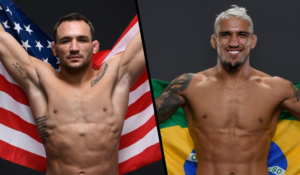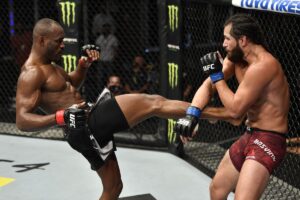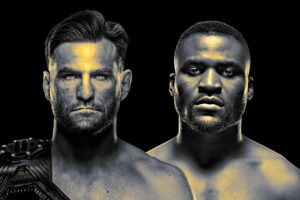WTF is SB 206?
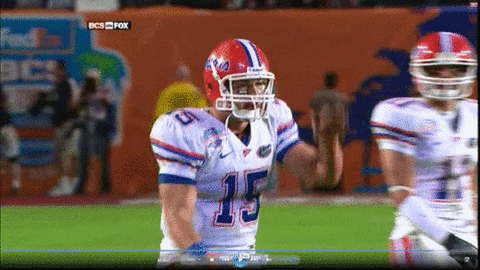
College sports is big business. There are billions of dollars in television rights and apparel deals throughout the country that allow for logos to be slapped everywhere at stadiums and arenas across the country in the name of colleges and universities. It allows for some states to have basketball and football coaches as the highest-paid public servant. The student-athletes, though, get a scholarship and not much else — which isn’t a fair exchange of gifts, is it?
That’s the question that California state bill 206 begs to answer. It asks if student-athletes should be able to profit from their image and still retain eligibility in NCAA sports, uninterrupted. You’d have to consider how this works and who it helps and hurts, but we have to start with “What the fuck is SB 206?”
What is SB 206?
Senate Bill 206, the Fair Pay to Play Act, is a bipartisan California law that will give “[California-based university] student-athletes the right to their name, image, and likeness, allowing them to earn money from sponsorships, endorsements, and other activities related to their hard work and talent.” The law will take effect in 2023, giving enough time for it to change shape, if need be.
Where is this coming from?
Well, to quote the author, state Sen. Nancy Skinner, “SB 206 brings an end to the exploitation of student-athletes by the multibillion-dollar college sports industry, which generates wealth for all involved except the students.”
To put this another way: the NCAA basketball tournament has a $19.6 billion deal with CBS and Turner Sports until 2032. To say that these young men and women are properly compensated with a tuition scholarship, room & board, and a cost of attendance stipend in exchange for their image rights and prime athletic years, when they sign a national letter of intent to a university, is not true.
So what is the NCAA?
The National Collegiate Athletic Association is a nonprofit, non-governmental organization that governs student-athletes from over 1,000 North American institutions, across 100 athletic conferences. Currently led by Mark Emmert, it was founded in 1906 by Theodore Roosevelt because of injuries in college football. Today, the Indianapolis-based organization brings in over $1 billion a year from sponsorships and tv deals.
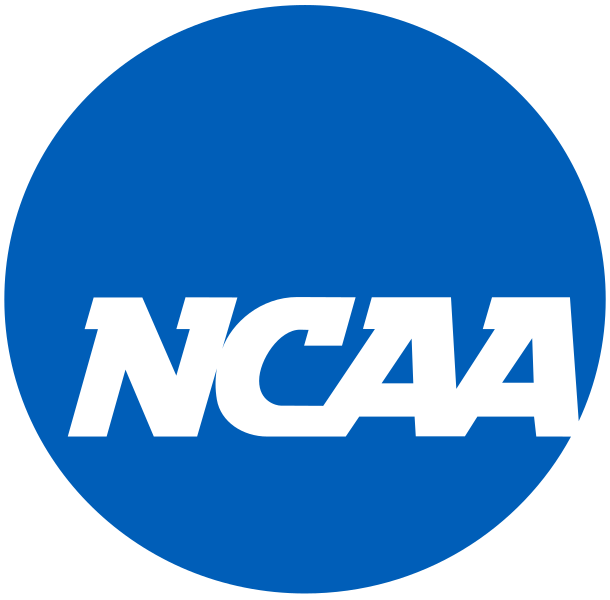
What does the NCAA think of this law?
They are not in love with it. In two different press releases, Emmert and company see it as unbalancing the difference between professional and amateur athletes, in addition to creating an “unfair recruiting advantage,” which could lead to the schools being unable to compete in NCAA sanctioned competitions. Moreover, they admit to being committed to supporting student-athletes, but admit that “improvement needs to happen on a national level through the NCAA’s rule-making process.”
Isn’t a scholarship payment enough?
At some point, it probably was. There haven’t always been billions in college sports, or in sports in general. The explosion of salaries in major American sports is a really recent thing. As well, a free college education, and covering a majority of the costs that it entails, lifts a substantial financial burden.
But consider three things:
1. A majority of schools do not give fully guaranteed four-year scholarships. A Division I scholarship is basically a one-year deal with the opportunity for performance-based renewal, which can be canceled for injury, a new coach, academics, etc.
2. If your image is generating money and you’re paid in a scholarship, is that equivalent? You may get tutoring and food/board paid for, as well as professional level training, but you are also endorsing the school by competing under their flag. Now, not all schools are making millions like the University of Texas, Austin from an ESPN deal, but they’re still generating money off of your likeness and image. Does that honestly sound fair?
3. Don’t forget you have to practice at specific hours, within the limits of NCAA rules. You also have to stay in shape, which takes the practice and training hours into the 40-hour range. Congrats, you have a full-time job. But remember, you have to go to class at specific times to not interfere with practice. You can’t major in anything too time consuming, because there is a delicate balance here. Congrats, now you have two full-time jobs. You still need to eat a good amount to keep up with both, do homework and study because you are a student-athlete. There is an academic standard to maintain in order to compete, or else you land on academic probation if you’re not lucky enough to be in a paper class.You never see this kid eat once | NCAA PSA via youtube
Wait, how would kids get paid again?
An example: A car dealership can give the star University of Southern California quarterback an endorsement deal. USC, the school, can’t pay the student directly. Student-athletes can hire an agent to facilitate the deal, who would get paid on commission, ideally. Said USC QB can’t make a deal with Adidas since it would create a conflict with the school’s current apparel deal with Nike. This will all probably be modified, until 2023 when the law officially takes effect.
What other states are interested in having their own law?
And now, a list of states, hyperlinked. Yay. I think most of these states should do it, unless it involves taxpayer money, somehow.
Also, U.S. Representative, and former Ohio State football player, Anthony Gonzalez (R-Ohio) wants to bring forward a national bill, similar to the California bill.
Does the FBI college basketball bribery case play a role?
Maybe. The idea of student-athletes getting paid under the table has been around long enough for there to be a 90s movie with Shaq in it. The FBI case put a spotlight on money in college sports. To note: this was all textbook illegal, since families were being bribed into school decisions. Also, paying student-athletes has long been a national conversation topic, but with Gov. Gavin Newsom signing the bill, it is the furthest legislation has gotten.
Also, it’s not like colleges have a problem with admissions scandals, involving students who have made money off their likeness, while going to college. Never happened.
Which athletes have the most to gain from this?
Football and basketball players are the most obvious. Those sports are the most tinged with players being paid under the table to go to a certain school, or to have their services retained by a certain agency. Reggie Bush was vacated and banned, so USC’s QB in 2023 could do a car dealership commercial, some day.
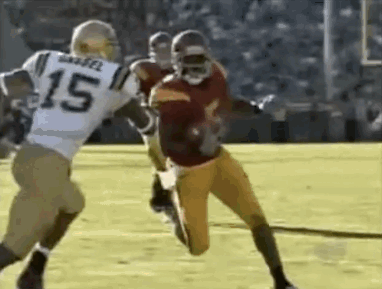
Most other sports have stars go into the professional ranks at earlier ages. You could likely see top-tier Olympic athletes like Katie Ledecky or Allyson Felix stay in or compete for a school, respectively, because they’d be able to make money off their image while still in school.
Also, weird fact: if this law goes unchanged, it wouldn’t affect Title IX. Since the universities aren’t giving athletes money, the outside corporations would not be held to this legal standard. Although, don’t tell the NCAA that, because the idea that this law hurts women is already out there.
Isn’t this a risk for advertisers?
Hell yes. It’s dependent on the student’s athletic ability being prominent enough that they’re able to be marketable in commercials. Anything can happen: Zion Williamson busted through a Nike sneaker on national television. Nike lost money initially, because it made their shoes look defective on the foot of the future number one pick in the 2019 NBA Draft. Imagine if Zion couldn’t play again? Nike wouldn’t go bankrupt, but some faith would be lost in the brand.
In accord, any time a company gives money to an endorsee, especially one that is young and unproven, it is a big chance to take. Sometimes you have a Stephen Curry and sometimes you have a Sebastian Telfair. You never know who will boom or who will bust.
What does Tim Tebow have to do with this?
He was one of the world’s most famous athletes at one point. The former Univ. of Florida QB probably had a branding peak when he was in college, so he could have made a pretty penny, if he wanted to. The current Mets minor-leaguer/ESPN college football analyst recently said this, when asked about the law on the ESPN program, First Take:
And that’s a completely fair point, based on his own experience and his own desires. It also comes from a point of privilege, from a guy who was home-schooled by college-educated parents and left college with a number of marketing deals ready for him, regardless of his draft slot in 2010. He even had his own logo in college — for the marketing company he set up with his brother.
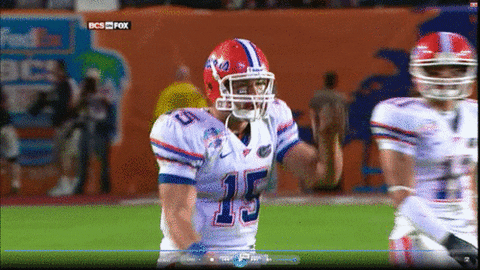
A majority of college athletes live below the poverty line, according to many reports. When institutions can use your image and you hit a marketing peak, then you’re losing out on money that is effectively collected by the schools and corporations, but not the athlete. Especially in today’s social media culture, those viral moments come faster, but don’t last as long. You have to strike while the iron is hot, if you want to collect on that potential money. Ask Katelyn Ohashi, Ed O’Bannon, or Donald De La Haye.
What does LeBron James have to do with this?
He’s one of the world’s most famous athletes, who happened to not go to college, unlike a majority of his American peers in the NBA because:
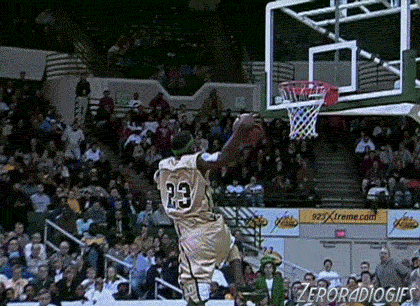
- He was an undeniable talent at 18
- James was poor and, in his words, making his mom wait a year or two so he could change the reality of their life situation, did not seem right.
Whether he would have gone to college, if there was a way for him to make money, is up for debate. Then again, he got $90 million from Nike fresh out of high school, so I think he’s fine.
The 17-year NBA veteran has built a platform, which he has consistently used to advocate for this subject.
Are there any other prominent voices for or against this legislation?
PAC-12 commissioner Larry Scott, which has four schools in California, came out strongly against it, noting that it would “lead to the professionalization of college sports and many unintended consequences related to this professionalism.”
A number of college football coaches were asked about it and, um, yeah. I’ll just leave a link here for their answers and non-answers.
ESPN commentator Jay Bilas has been beating this drum for a long time, consistently pointing out NCAA oversight, to the point that the LA Times put out a pretty good suggestion: let him run the NCAA.
Recently, Duke men’s basketball coach Mike Krzyzewski voiced a favorable opinion on the law, because, “it pushes the envelope, it pushes the issue.”
What does this all mean?
Young men and women will be able to make money off their images in California come 2023. SB 206 currently forces pressure on other states to keep up. I think this law, at a very basic level, makes it possible to capitalize on a viral moment, be you a Div. I, II or III athlete. Your notability generated by a big play or a gymnastics routine to hip-hip songs, will directly benefit you, and not just your university. This law could work at a national level and could get through if Rep. Gonzalez doesn’t ask for schools to give up money.
If anyone gets banned for allowing kids to get paid and play, it kind of makes the NCAA a villain. Sooner or later, they’re going to have to get on board or get out of the way. Or blatantly dilute every sport, by further limiting training and coaching hours and/or reducing staff, at every level. Nick Saban probably shouldn’t be the state of Alabama’s highest paid employee. This, and more extensive GPA requirements, would allow for more of an emphasis on the ‘student’ in the student-athlete. Then again, with the professional level work everyone is putting in and the money being made, we wouldn’t want that, would we? So pay the kids. It’s hard, but Emmert has a Ph.D., he can figure it out.
Want to keep up with The RYM? Like us on Facebook, follow us on Twitter,follow us on Instagram, or join our mailing list below!

